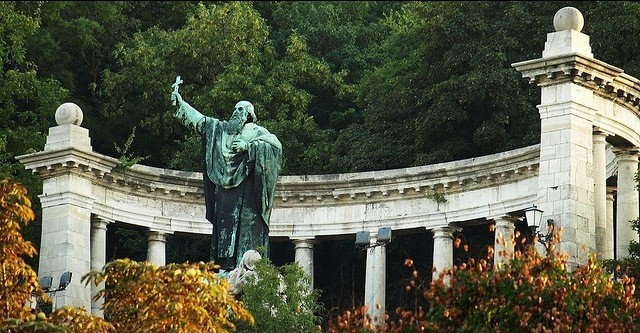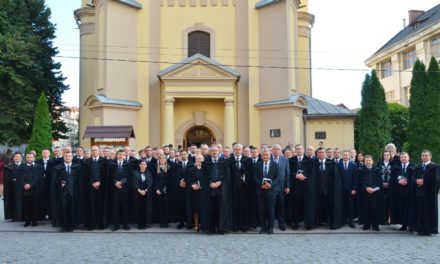We remember Saint Gellert, the patron saint of the Diocese of Szeged-Csanád, on September 24. At the beginning of our people's conversion to Christianity, God guided us to serve God and the conversion of Hungarians to Christianity as an educator, hermit, bishop and martyr of Prince Imre.
Szent Gellert was born in Venice around 980. He was a small child when his parents took him to the monastery on St. George's Island, opposite the St. Mark's Cathedral. He took the name Gellért in honor of his father, who died during his pilgrimage to the Holy Land.
At the age of twenty-five, he was elected a priest by his fellow religious, and then, at the suggestion of Abbot Vilmos, he was sent to Bologna with his partner in order to deepen his knowledge. He returned to the monastery on Saint George's Island at the age of thirty-two. He was elected abbot after the death of Abbot Vilmos, but resigned three years later in order to leave for the Holy Land.
They set out for Gellért in 1015 with two companions, but a sea storm drove them towards the coast of Istria. There they dropped anchor in the harbor of St. Andrew's Island near Parenzo (today Poreč) and found refuge in the island's Benedictine monastery.
During the forced rest, Father Gaudentius of Pannonhalmi wanted to win Gellért over to his plan to establish a monastery and convert in Hungary. He gave in to his persuasion with the undisguised intention that he would be able to get to the Holy Land more easily through Hungary. On May 3, 1015, they arrived in Pécs, to Bishop Mór, then with him and Abbot Asztrik of Pécsvárad, they went to Székesfehérvár, to King István, who entrusted Gellért with the upbringing of his son. At that time, Prince Imre was eight years old and he raised Gellert for seven years in the royal palace in Esztergom.
Then followed the years of hermitage in Bakonybél. Here he spent his days in fasting, prayer and vigil for seven years. He did not change his place of residence, he built himself a cell, and in it he obtained books which he wrote with his own hand.

According to the writings, the monastery in Bakonybél was already standing when Gellért retired there and built his cell further away from the building. King István certainly kept in touch with Gellért through the monastery and in 1028, after defeating the leader Ajtony, Saint István entrusted him with the organization of the diocese of Csánád.
Gellért was the first to divide the territory of the diocese into seven archdeaconries, and appointed those who knew Hungarian among the priests he brought with him to head them. He then organized a chapter school to ensure the supply of priests, and finally had churches built, and his activities were generously supported by King István.
After the death of Szent István, during the religious and throne disputes, Gellért falls into the hands of the rebels. One morning in September 1046, during his mass at St. Sabina's Church, he had a vision of their impending martyrdom. As they approached the so-called Pest reeve, the pagan rebels of Vata attacked them with a shower of stones, and the bishop was pushed from the rocks of Kelen-hegy, which was later named after him, into the depths. His body was temporarily buried in the Church of Our Lady in Pest (the church standing on the site of today's downtown main parish church), and later transferred to Csanád. During the reign of Saint László, in 1083, he was canonized together with King István and Duke Imre.
Source: Hungarian Courier












